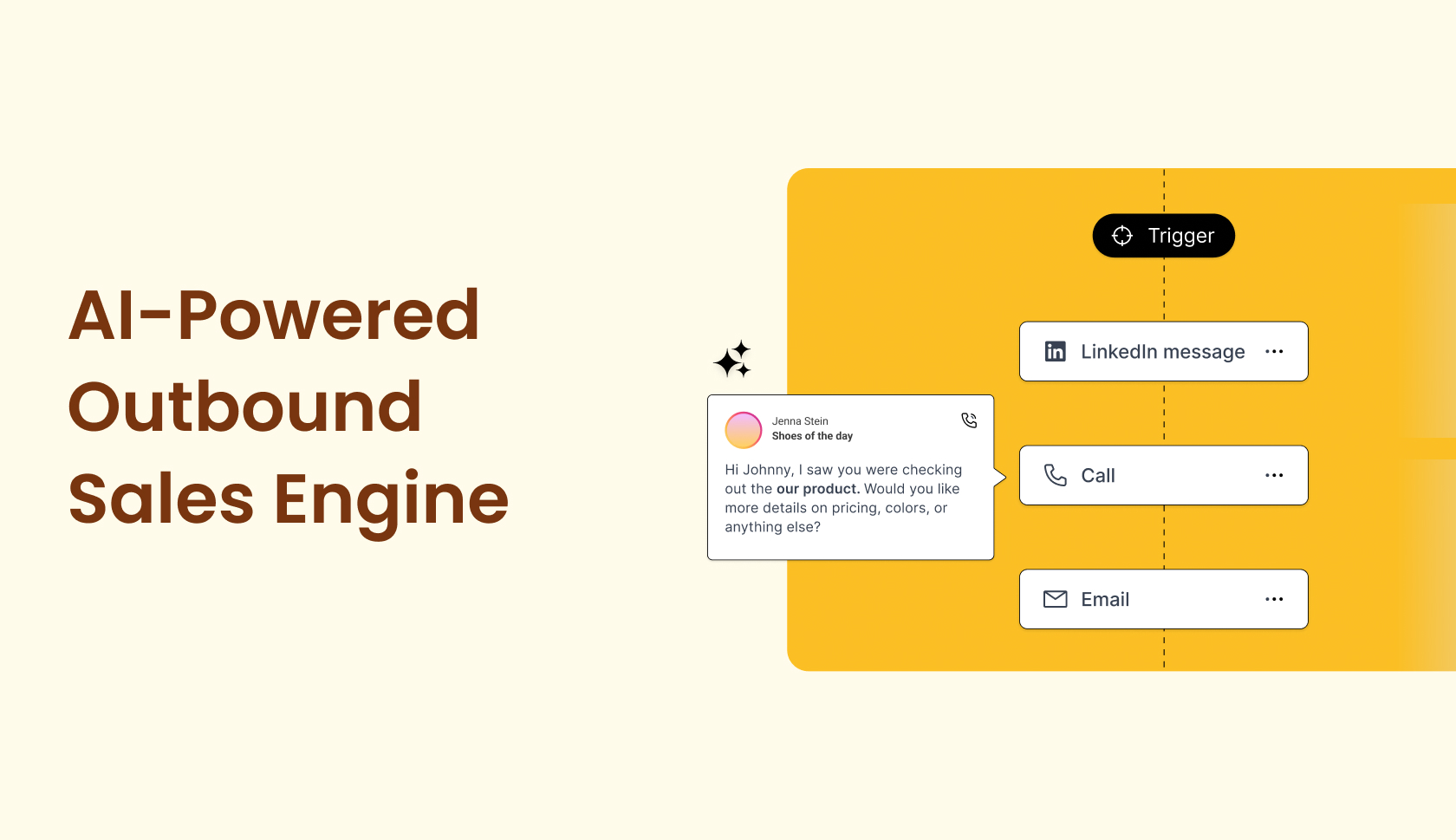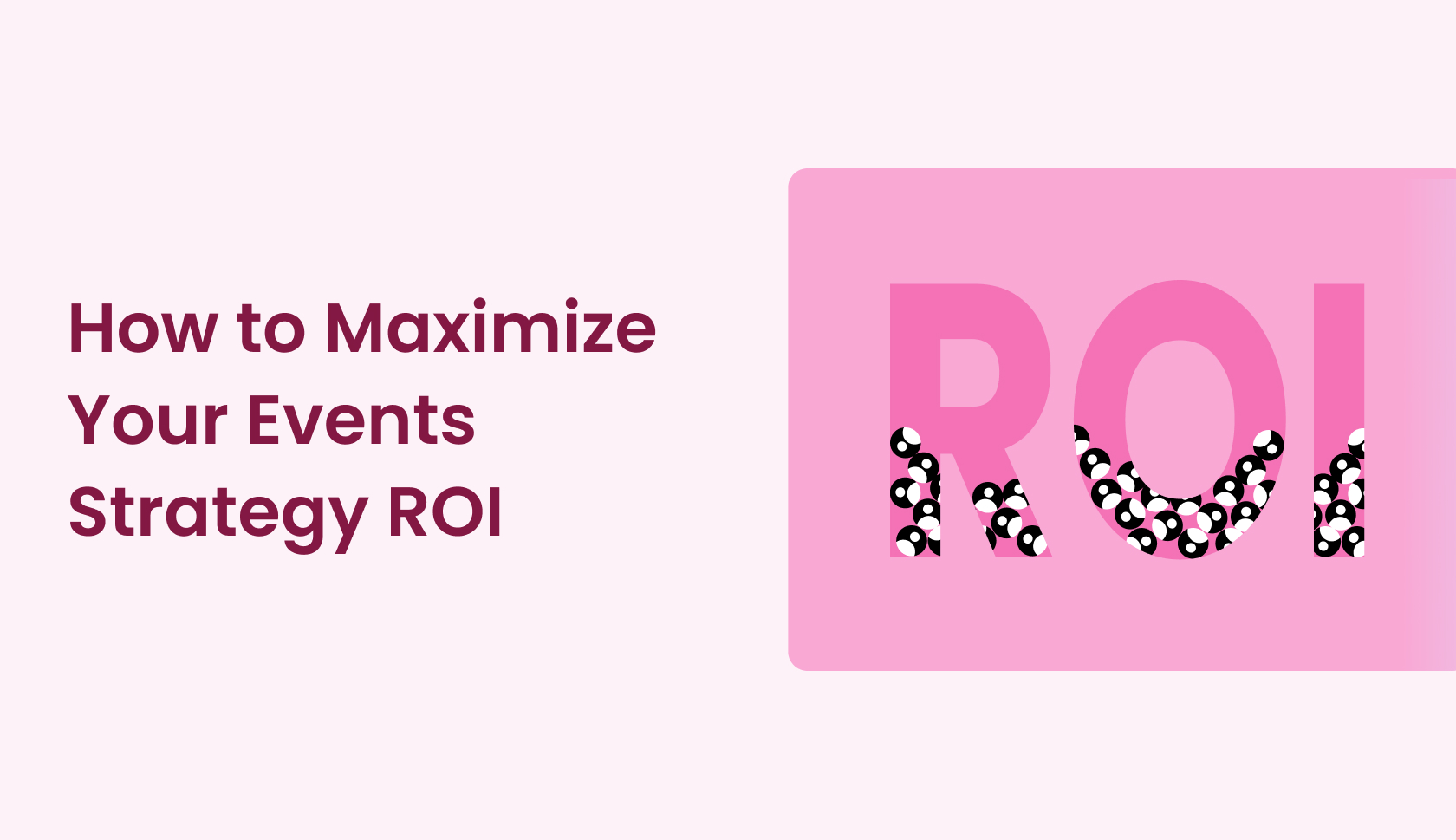
The Ultimate Guide to Building an AI-Powered Outbound Sales Engine
Introduction
Outbound sales remains the engine of growth for many B2B companies, driving pipeline creation and consistent revenue momentum. However, as buyer expectations evolve and competition intensifies, traditional prospecting and outreach methods are becoming less effective. Buyers today demand personalized, relevant engagement, not generic cold emails or scripted pitches.
This is where AI-powered sales development changes the game. By combining automation with personalization, AI acts as an augmented digital worker to engage more prospects, craft messages that resonate, and convert outreach into real opportunities at scale.
In this guide, we’ll explore what you need to build an AI-powered outbound sales engine that enhances productivity, increases relevance, and accelerates revenue growth for your team.
Step 1. Define your outbound sales goals and workflows
Before you implement an AI solution, it’s crucial to paint a clear picture of your current outbound sales processes. Start by mapping out every step of your existing workflow:
- Lead sourcing: Where do your lists come from? Are you relying on static purchased lists, manual LinkedIn sourcing, or internal marketing-generated data? Identify bottlenecks in building or refreshing target lists.
- Prospect research: How do your SDRs gather insights about prospects before outreach? Manual research can be time-consuming, limiting the volume of personalized outreach reps can perform daily.
- Messaging and personalization: What level of personalization are you using now? Are your reps customizing outreach based on role, industry, or individual triggers, or is messaging largely generic?
- Cadences and sequences: How are your outreach cadences structured? Are they consistent across the team, optimized for engagement, and tailored by persona and use case?
- Team handoffs: How are qualified opportunities transitioned from AI SDRs or junior SDRs to AEs? Are these handoffs smooth, with clear contextual data to ensure a seamless buyer experience?
Documenting these workflows helps you create a baseline to pinpoint inefficiencies and opportunities where AI can amplify impact. It ensures that your AI investments align with your outbound goals, whether that’s expanding top-of-funnel coverage, increasing conversion rates, or accelerating pipeline velocity.
Step 2. Integrate AI SDRs as virtual team members
AI SDRs act as extensions of your team (who don’t have to take time for sleeping, eating, or weekends), taking on repetitive, time-intensive tasks that traditionally limit human productivity. Unlike traditional automation tools that simply execute predefined actions, AI SDRs can operate autonomously with human-like reasoning and context awareness.
For example, AI SDRs can:
- Identify high-potential leads by analyzing large data sets for ideal customer profile (ICP) fit and intent signals that indicate readiness to engage.
- Research prospects at scale, gathering insights such as role changes, company news, funding rounds, and strategic initiatives to inform tailored outreach.
- Craft personalized outreach messages that reflect each prospect’s pain points, industry context, and goals, increasing the likelihood of replies.
- Run multi-touch outreach cadences, qualifying responses, handling basic objections, and scheduling meetings directly on rep calendars.
It’s important to define how your AI SDRs will collaborate with human reps. For many teams, AI handles initial prospecting, outreach, and qualification, then passes warm prospects to human SDRs or AEs for deeper discovery and pipeline advancement. This hybrid model maximizes efficiency while leaving high-value conversations to the human reps for relationship-building.
Step 3. Prioritize personalization at scale
Generic outreach is simply not effective anymore in this crowded market. Buyers are inundated with cold emails, most of which are irrelevant and easily ignored. AI sales assistants enable true personalization at scale by leveraging data that humans just can’t process quickly enough.
For example, AI can analyze:
- Firmographic data, such as company size, revenue, and industry nuances, to tailor messaging language and pain points.
- Technographic data, identifying software stacks and tools prospects use to align outreach with integration value propositions.
- Real-time triggers, including job changes, company funding news, new product launches, or strategic initiatives.
- Historical interactions, referencing previous conversations or downloads to create continuity and relevance.
By integrating these insights, AI creates messages that feel human, relevant, and timely,opening doors to conversations that generic cadences couldn’t achieve. This approach enhances brand perception and builds trust even before the first live conversation.
Step 4. Align outbound messaging with your value propositions
While AI excels at developing personalized outreach, it requires strong strategic foundations to make every message align with your brand and value. You’ll want to develop comprehensive messaging frameworks that AI SDRs can leverage, including:
- ICP-specific pain points: Clearly defined challenges faced by each buyer persona your team targets.
- Industry-relevant value statements: How your solution addresses vertical-specific needs or compliance requirements.
- Feature-to-challenge mappings: Which product capabilities solve specific prospect problems, framed in customer-centric language.
- Tone and style guidelines: To maintain brand voice consistency across all outreach.
Make sure you regularly review AI outputs and update messaging frameworks to reflect product updates, market shifts, and evolving buyer expectations. This keeps outreach fresh, differentiated, and in line with your overall go-to-market strategy.
Step 5. Continuously measure, analyze, and optimize
Building an AI-powered outbound engine is not a set-it-and-forget-it initiative. Ongoing measurement and optimization are key to lasting success.
Important KPIs to track:
- Connect rates: How often outreach results in meaningful engagement.
- Reply rates: The quality and relevance of messaging, reflected in response volume.
- Meetings booked: The ultimate goal of outbound prospecting efforts.
- Qualified pipeline generated: Ensuring outreach translates into real business opportunities.
- Pipeline velocity: How quickly leads move through stages post-engagement.
Use these insights to refine targeting criteria, messaging templates, AI SDR workflows, and overall outbound strategy. AI systems improve with feedback, so constant optimization will keep your outbound engine agile, relevant, and high-performing as market dynamics evolve.
Conclusion
An AI-powered outbound sales engine is a productivity upgrade, yes, but it’s also a strategic transformation. By combining the scalability and precision of AI with human judgment and relationship-building skills, your sales team can engage more prospects, build stronger connections, and convert outreach into revenue faster than previously possible.
Alta’s AI SDRs are designed to help your team build a high-performing outbound engine that turns insights into meetings and meetings into closed deals. We’d love to show you how our AI sales assistants can elevate your outbound strategy for today’s competitive sales landscape.
Frequently Asked Questions
How are AI sales agents different from traditional sales tools?
AI sales agents go beyond traditional sales tools by acting like real teammates, not just automation software.
Alta’s top-performing AI sales agents, Katie and Alex, stand out by taking full ownership of sales tasks - from sending messages and making calls to booking meetings. They use real-time data from 50+ sources to decide who to reach, when to reach them, and what to say, ensuring precise targeting and higher conversion rates.
With 24/7 availability and real-time optimization, AI SDR tools like Katie and Alex ensure no lead slips through the cracks, even when your team is offline. As sales agents for 2025 and beyond, they help maximize efficiency, streamline workflows, and drive better sales outcomes.
How do AI SDRs improve prospecting and lead generation?
AI SDRs use real-time data, automation, and prioritization to find and engage the right leads faster and more effectively than manual prospecting.
Alta’s top-performing AI sales assistant, Katie, excels at:
- Real-time lead discovery: Katie monitors 50+ data sources to identify high-intent prospects based on hiring trends, funding events, tech stack adoption, and more.
- Smart lead prioritization: She ranks and scores leads based on fit and buying intent, helping your team focus only on the most promising opportunities.
- Automated multi-channel outreach: Katie engages prospects through personalized emails and LinkedIn messages, ensuring fast follow-up and maximizing lead coverage without extra manual effort.
Using AI SDR tools like Katie, sales teams can build a stronger, more efficient pipeline and stay competitive in 2025’s evolving sales environment.
How does Katie identify the best ICP?
Katie uses AI to analyze your data, including past wins and successes, to identify your Ideal Customer Profile (ICP). It ensures you target high-potential prospects by creating a lookalike audience based on this data, making your outreach more effective.
How does Alex handle different languages?
Alex is multilingual and can communicate fluently across multiple languages, adapting tone and cultural context to match your target market.
How do I choose which events are worth investing in?
Evaluate events based on attendee profiles (whether they include your ideal customers/decision‑makers), relevance of session topics, past sponsors/exhibitors (to see if competitors or partners attend), and format (in‑person, virtual, hybrid). Focus your resources on events that align tightly with your market and goals.
When should a sales or marketing team begin outreach before an event?
Start your outreach 8–12 weeks before the event. This timeframe allows for multiple touchpoints, scheduling of meetings ahead of time, and better personalization and segmentation of prospects.
What internal preparations help maximize event success?
Equip your team by providing them with:
- Comprehensive contact profiles (past interactions, pain points)
- Strategic talking points aligned with attendee challenges
- Defined roles (who mans the booth, who handles pre‑booked meetings, who network)
- A process for capturing insights immediately after each conversation
These preparations help your team stay sharp, coordinated, and responsive during the event.

.jpg)





